Exploring Touch Screen Monitors: The 12-inch Interactive Display
Touch screen monitors are interactive displays that enable direct user interaction through touch, eliminating the need for intermediary devices such as keyboards or mice. These monitors are gaining traction across diverse sectors—including retail, hospitality, healthcare, and industrial applications—owing to their intuitive interfaces and the superior user experience they provide. The underlying technology of touch screen monitors involves sensors that detect touch or pressure by a user's finger or stylus, converting this input into a digital signal for the device's software to act upon or respond to.
Touch screen monitors are designed based on the concept of capacitance. A user's touch disrupts the monitor's electrical field, which is then measured to pinpoint the touch location. This allows for multi-touch capabilities, such as zooming, panning, or rotating images with multiple fingers, which is especially advantageous for gaming and graphic design. In contrast to conventional displays that rely on buttons or a mouse for navigation, touch screen monitors provide a more organic and immersive interface, reminiscent of the experience with smartphones or tablets.
Varieties of Touch Screen Monitors: The 12-Inch Models
The market presents an array of 12-inch touch screen monitors tailored to meet diverse needs and applications, each with distinct attributes:
-
Capacitive Touch Screens: These screens utilize a fine wire grid to detect the touch of conductive objects like fingers or styluses. Renowned for their sensitivity, they are the go-to choice for smartphones and tablets due to their accuracy.
-
Resistive Touch Screens: Operating on pressure sensitivity, these screens register the exact location of touch without the responsiveness of capacitive sensors. They are commonly found in industrial environments or interactive kiosks where durability and environmental resistance are crucial.
-
Multi-Touch Screens: Capable of recognizing multiple simultaneous touch points, these screens enable complex gestures, allowing users to zoom, rotate, or draw with several fingers at once. They are ideal for interactive gaming and design tasks.
-
Projected Capacitive Touch Screens: An evolved form of capacitive screens, these can detect touches even when the screen is projected. They are employed in situations where a large display is necessary but direct screen contact is impractical.
-
Optical Touch Screens: These screens use a network of light beams to identify touch events. Although less common in smaller sizes due to their bulk, they offer exceptional clarity and are suitable for spaces where size is not a limiting factor.
Selecting the Right Touch Screen Monitor: 12-inch Display Considerations
Choosing the appropriate 12-inch touch screen monitor entails a thorough evaluation of several aspects to ensure it aligns with your specific business or operational needs.
First, determine the interface type that aligns with your intended usage. The necessity for an HDMI interface for high-definition video or a USB interface for straightforward plug-and-play connectivity will vary based on your system's design and needs. For instance, HDMI may be essential for gaming or digital signage that demands high video quality.
Next, consider the environment in which the application will operate. Monitors destined for outdoor use or brightly lit settings may require high brightness levels for clear visibility. In industrial contexts where resilience is paramount, a rugged and waterproof monitor might be the preferred choice.
Furthermore, pinpoint any particular features that could enhance functionality or the user experience. If a multi-touch display is needed for interactive use, confirm that the monitor supports such a feature. For applications involving ATMs or tablets, ensure the monitor can seamlessly interface with the necessary technology.
Last, consider the importance of after-sale services for your operations. The availability of repair services, return policies, or spare parts could significantly influence your decision.
Discovering 12-inch Touch Screen Monitors on Alibaba.com
Alibaba.com distinguishes itself as a premier online marketplace for procuring wholesale touch screen monitors suitable for a wide array of applications, from retail point-of-sale systems to industrial machinery, healthcare devices, and gaming setups.
The platform's intuitive interface enables buyers to meticulously compare models based on detailed specifications such as interface type, size, aspect ratio, color depth, and material composition. This attention to detail ensures that businesses can pinpoint products that precisely meet their operational needs.
Alibaba.com's dedication to smooth transactions is underscored by services like Trade Assurance, which enhances buyer confidence by protecting payments until the completion of order fulfillment. This commitment to reliability, combined with the convenience of mobile purchasing and multilingual support, cements Alibaba.com's role as not just a marketplace but as an essential partner in global commerce for small and medium-sized enterprises aiming to broaden their market presence and seize growth opportunities in an increasingly digital economy.
Frequently Asked Questions: 12-inch Touch Screen Monitors
How do resistive and capacitive touch screen technologies differ?
Resistive touch screens respond to pressure and can be operated with gloves or non-conductive tools, making them suitable for industrial settings. Capacitive touch screens, activated by heat, offer greater responsiveness and are ideal for devices like smartphones and tablets where precision and ease of use are key.
Does screen size impact the functionality of a touch screen monitor?
The size of the screen is directly proportional to user-friendliness and the clarity of displayed information. Larger screens facilitate the viewing of details, which is advantageous for precision-requiring applications such as graphic design or medical imaging.
What considerations are important for choosing a touch screen monitor for outdoor environments?
For outdoor applications, opt for touch screen monitors that boast high brightness, anti-glare properties, and sturdy construction to maintain visibility in bright sunlight or other luminous conditions.
Are there specific certifications to look for when purchasing touch screen monitors for commercial use?
Certifications may vary by region, but it is advisable to select products that comply with industry standards pertinent to your application, such as FCC, CE, RoHS, or UL certifications.
Is it possible to obtain a custom-sized touch screen monitor for specialized applications?
Certain suppliers may provide customization services for touch screen monitors to accommodate unique specifications. Direct inquiries to suppliers are recommended to explore customization possibilities.
What after-sale services should be considered when acquiring touch screen monitors?
Post-purchase services like repair, return and replacement policies, and the provision of spare parts are essential for the sustained operation of your touch screen monitors.
How can I ascertain if a touch screen monitor fits my business requirements?
Identify essential features such as screen size, resolution, interface type, and additional functionalities like touch capabilities or integrated speakers. Verify that the selected monitor fulfills all your specified needs.
What do 'multi-point touch' and '10-point touch' signify in touch screen monitors?
'Multi-point touch' denotes the screen's ability to detect multiple touches concurrently, while '10-point touch' indicates the capacity to recognize up to ten simultaneous touches, enabling more intricate user interactions.
Does touch screen technology differ in terms of user interface design and functionality?
Indeed, capacitive touch screens typically offer a more fluid user interface with gestures such as swiping and pinch-to-zoom. Resistive screens may necessitate more deliberate tapping and pressure, which can influence user experience in certain contexts.
Which industries frequently employ touch screen monitors?
Touch screen monitors are extensively utilized in various sectors, including retail, hospitality (e.g., restaurants, hotels), gaming, healthcare, education, and industrial environments for control panels.

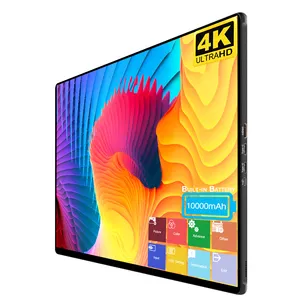

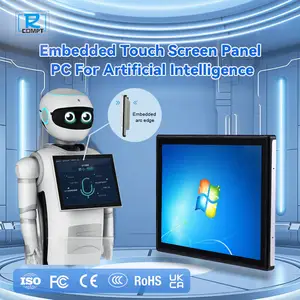








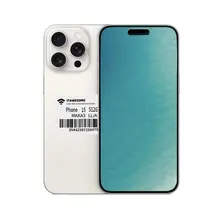
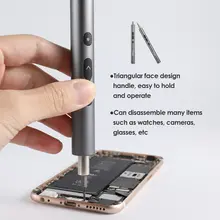



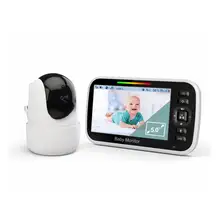



























 浙公网安备 33010002000092号
浙公网安备 33010002000092号 浙B2-20120091-4
浙B2-20120091-4